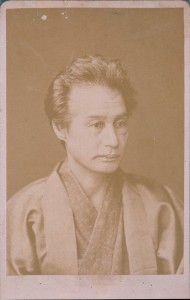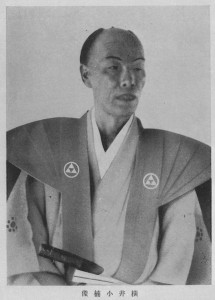

On the 70th anniversary of the dropping of the atomic bomb on Hiroshima, I think of two warriors of peace in 19th century Japan, Yokoi Shōnan (on the right) and Katsu Kaishū, during their country’s most turbulent era thus far. The following is a slightly edited excerpt from my Samurai Revolution: The Dawn of Modern Japan Seen Through the Eyes of the Shogun’s Last Samurai:Shortly after Perry’s arrival in the summer of 1853, Yokoi had advised the Tokugawa Bakufu that refusing to communicate with foreign nations would make Japan look bad to the rest of the world. Rather, the government should “communicate with righteous nations, but reject unrighteous nations.” But, he professed, if any country should illegally threaten Japan with warships and troops, then Japan must fight to defend itself. Kaishū thought Yokoi so profound as to be frightening. “I’ve seen two frightening men in my life,” he recalled many years later. “Yokoi Shōnan and Saigō [Takamori]. . . . Yokoi didn’t know that much about the West; I taught him a thing or two [on that subject]. But there were often times, when it came to the high tone of his ideas, that I felt I could never reach [his level]. . . . Although Yokoi was not very good at working on his own, if there was anyone around who could implement his ideas, I thought that the two of them [could accomplish great things.]” In the coming revolution, Katsu Kaishū’s confidants on the anti-Tokugawa side—Sakamoto Ryōma of Tosa and Saigō Takamori of Satsuma—would implement Yokoi’s ideas.
Yokoi was a famous admirer of George Washington. He admired the man who had led the American revolutionary forces against the British, for his selflessness in stepping down as president when the time came. Calling Washington a “red-haired, blue-eyed saint,” Yokoi believed that the world would never again see the likes of such a selfless leader. Like Kaishū, Yokoi hated war. Once he told a fellow Kumamoto samurai of his desire to travel to America to meet the president and “conclude a peace treaty. Then I’d like to travel to other countries and do the same, until there is no more war in this world.”
Yokoi was assassinated in early 1869, a year after the fall of the Bakufu, by reactionaries opposing the Westernization of Japan, for which they blamed Yokoi and others, including his close friend Katsu Kaishū, the “shogun’s last samurai.”
For updates about new content, connect with me on Facebook.
Samurai Revolution is the only biography of Katsu Kaishu in English.

